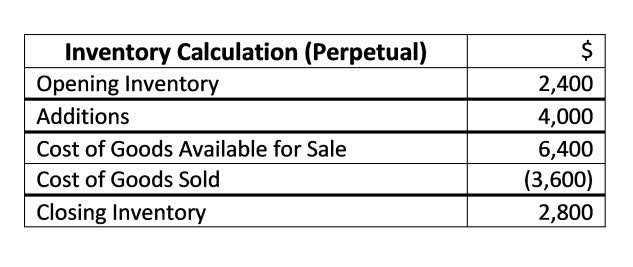Nenhum produto no carrinho.

It is the accounting principle that revenue and expense must record based on occurrence. For insurance, the expense is recorded when the company has utilized the service. Insurance is the expense that company purchases from the insurance provider in exchange for the insurance service. The entity needs to pay the insurance fees on a yearly basis in order to receive the insurance cover. The entity needs to pay the insurance fees in advance to the insurance company. Discover its debit/credit nature as it transforms from a future benefit to a consumed cost.
B2B Payments
As they offer future economic benefits for businesses, prepaid insurance is considered a current asset. The prepaid insurance is decreased with a credit. accounting treatment of prepaid insurance directly impacts a company’s financial statements. The unexpired portion of the prepaid insurance, representing the future economic benefit, is reported as a current asset on the balance sheet.
- Assets are recorded on a company’s balance sheet, which presents its financial position at a specific point in time.
- The portion of the prepaid asset that has been used up is reclassified as an expense, such as Rent Expense or Insurance Expense.
- Once coverage is utilized, the expense is recognized, reflecting its continuous consumption over time.
- Understanding prepaid insurance is essential for proper accounting treatment.
- While you can record insurance entries manually, accounting software automates the process.
Recording the Initial Insurance Payment
For businesses seeking loans or investments, a solid current asset base may enhance their borrowing capacity. Prepaid insurance refers to payments made for insurance coverage that has yet to be utilized within a specified period. It is an asset that represents the right to receive future insurance benefits.
Cash Management
This entry is crucial because it aligns with the matching principle of accounting, which states that expenses should be recognized in the same period as the revenues they helped generate. The following journal entry will be passed and reflected in the books of accounts of XYZ company. This blog covers the ins and outs Bookkeeping for Startups of prepaid insurance, its importance, advantages, examples, ways of recording, calculations, and much more. Thus it is written on the asset side of balance sheet until it is utilised.

Prepaid Insurance Is a Current Asset on the Balance Sheet
In other words, the insurance premium is paid before it is actually incurred. Prepaid insurance transactions often occur when businesses pay for insurance coverage in advance, reflecting a commitment to protect their assets and liabilities over a specified period. Common examples include annual health, liability, or property insurance policies that are paid in full at the start of http://weavora.com/blog/2021/12/23/10-best-corporate-accounting-software-for/ the policy term. Prepaid insurance reflects a payment made in advance for coverage over a future period, impacting the income statement as time progresses.


#9 – Insurance contracts Life insurance policies pay the insurance holder on maturity and are financial assets at the time of maturity; these policies pay the maturity amount of the policy. The debit balance at the end of the year is shown on the asset side of the balance sheet and the amount is carried forward to the next year. Prepaid Expenses are referred to as representative personal accounts (accounts that represent a certain person or group of people). According to the rule for personal accounts, we have to debit the receiver of the benefit and credit the giver of the same. Following these debit and credit guidelines helps ensure all insurance transactions are recorded correctly.
- Understanding whether insurance is a debit or credit transaction is the key first step.
- Cloud accounting systems like QuickBooks Online and Xero seamlessly record insurance expenses across periods.
- While it does start with a debit for the initial payment, it also necessitates credit entries when recognizing the insurance expense over time.
- At the end of July, ABC has consumed insurance service for a month, so ABC needs to record insurance expenses as well.
- Adjusting entries for expiration relate to recognizing the amount of prepaid insurance that has been consumed during a specific accounting period.
- For example, upon the receipt of $1,000 cash, a journal entry would include a debit of $1,000 to the cash account in the balance sheet, because cash is increasing.
Consequently, the confusion may stem from the dual nature of prepaid insurance—initially a debit, it transitions to an expense as time progresses and coverage is utilized. Another situation where you might create a credit balance in your prepaid insurance account is if a company simply fails to pay their insurance premium in a timely manner. The monthly adjusting entry causes the prepaid insurance to become a credit balance.
Businesses frequently pay for insurance premiums in advance, often for six months to a full year, to secure continuous coverage. Unlike a regular expense recognized immediately, prepaid insurance signifies a right to receive services over time. This initial payment creates an asset because the benefit has not yet been consumed. From a financial accounting perspective, prepaid insurance is considered a prepayment.
The term prepaid insurance refers to payments that are made by individuals and businesses to their insurers in advance for insurance services or coverage. Premiums are normally paid a full year in advance, but in some cases, they may cover more than 12 months. When they aren’t used up or expired, these payments show up on an insurance company’s balance sheet. When a business makes an advance payment for a service or good, this transaction creates a prepaid expense.

Can someone explain why a decrease in prepaid insurance increases cash flows (intermediate accounting)?
On 01 July 2022, company purchased insurance for $ 12,000 to cover from 01 July 2022 to 30 June 2023. Life insurance premium is classified as a personal account, since the insurance premium paid represents the amount paid for an individual. At this point, the $12,000 is classified as a current asset (Prepaid Insurance) on TechFirm’s balance sheet.